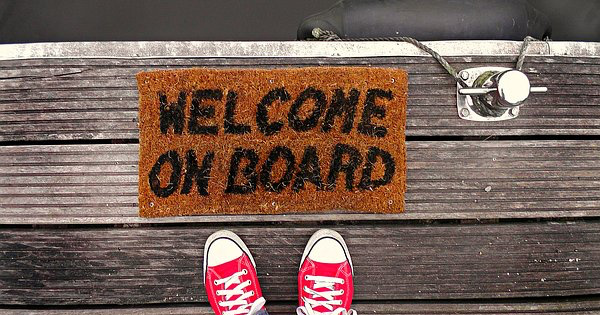I see many companies put a lot of time, effort, and money into hiring a new employee. Yet still, end up hiring the wrong person for the position. At best, hiring the wrong person will leave you trying to fill the skill gaps in your team. At worst, the new hire can introduce conflict, lower productivity, and destroy team morale.
One common mistake made by hiring managers is relinquishing too much of the hiring process to their HR department. While HR can be very helpful, they won’t know the role you need to fill as well as you will. As the hiring manager, you need to be fully invested during the entire hiring process. Don’t be tempted to cut and paste old job descriptions, or skip preparation before interviewing candidates, or follow through on a candidate’s past history.
A Roadmap for Successful Hiring
You can prevent managing nightmares and ensure hiring success by putting some extra time and preparation into your hiring process. This will help you hire someone who can integrate and thrive in your organization and help you achieve business goals. Hiring managers will have the best results by following these key steps:
- Mind the gap: Identify the skill gap(s) in your team
- Write it, don’t copy it: Write a clear and specific job description
- Don’t wing it: Plan out the candidates’ interview process
- Don’t rely on memory: Create and use a standardized written evaluation process for all candidates
- Don’t leave it to others: Contact references yourself
- Finish the job of hiring: Invest time and resources into onboarding your new employee
Mind the Gap: Identify the Skill Gap(s) in Your Team
A lot of managers in biotech hire simply to fill a position rather than to broaden, augment and complement existing skillsets within their teams. They’ll say “We need another research associate” or “We need to hire a manufacturing engineer” and advertise for those positions using a generic job description. What they don’t do is look at their existing team and determine what skill sets are missing to achieve current and upcoming goals. So they hire that new person, only to find out later that their team still has a skill gap. Then they may think that they still need to hire additional people, and the cycle continues.
A better solution is to find the right candidate to fill the missing skill set. For example, you might already have someone on your team who likes to do hands-on work all day, but no one who likes to do data analysis or write reports. Therefore, what you need is not simply another full-time employee (FTE), but a FTE who can do data analysis and write reports. It is critical to identify the specific skill gaps that are needed to achieve business goals.
Write It, Don’t Copy It: Write a Clear and Specific Job Description
Use the skill gaps that you have identified to list out the roles and responsibilities of the new position. Then write a tailored job description that addresses the specific skills and clearly defines the responsibilities needed in your team.
Make sure to solicit input from other departments (and/or existing team members) when creating the job description. This will help all departments (and/or team members) better understand why the person is being hired and how the new role will impact their current roles and responsibilities.
Use the job description as a reference during the interview process so you can identify which skills are present in the candidate and which skills are lacking. You can then prioritize the importance of the skills for the position since it is unusual to find a single candidate that will have everything on your wish list. With that said, don’t compromise on the necessary skills.
Don’t Wing It: Plan out the Candidates’ Interview Process
The interview process is about discovery, not about courting. It shouldn’t be about trying to convince people to come and work for you. It should be about seeing whether a person is a right fit for your organization, both technically and culturally. Hire for the skills and values that will help your company accomplish its goals. Focus on company values, not personality traits.
Many hiring managers and even many executives have never been trained on how to properly conduct an interview. They often go into an interview unprepared and, therefore, miss evaluating the candidate for the role. They may get sidetracked talking about common interests and end up hiring someone simply because she also likes to run half-marathons, or because he went to the same undergraduate school.
Avoid these problems by intentionally selecting the interview team. Clearly, communicate the role of each interviewer and explain the competencies and skillsets they should evaluate in each candidate. Explain the interview format and make interviewers aware of common biases and any legal concerns.
Plan the Interview Format
The hiring manager should decide on an interview format ahead of time. Do you want to do one-on-one or group interviews? Do you want to include a working trial? For example, if you are hiring a technical writer, it might be useful to have candidates write and/or edit a short piece during the interview. Thus you can assess their style and ability to clearly express themselves. Or, if the person has to give presentations as part of their role, then ask them to give a short presentation as part of their interview process.
Be Aware of Common Biases
We all have common decision-making biases. The best way to stop biases from impacting a hiring decision is to be aware of them.
Confirmation bias can happen if you make up your mind before interviewing a candidate. For example, if someone you respect recommends a candidate, you are much more likely to view their application and interview answers in a positive light.
Over-confidence bias can lead people to think they can tell a good candidate by gut feeling rather than by asking rigorous questions.
Similarity bias makes us hire people who are similar to ourselves.
Social comparison bias happens when we unconsciously or consciously compare ourselves to a candidate. If the candidate seems more skilled than us, then we may not want to hire them because we may see them as competition. Strong managers are not afraid to have bright and capable people working under them since managers and existing team members alike can all learn from the new team member. And, when good people are hired, it elevates the entire team’s performance.
Be Aware of Legal Concerns
Some questions are completely off-limits during a job interview because they violate employment law, including questions about age, race, and religion. Other off-limits questions may vary state-to-state (e.g. salary history, sexual orientation, or criminal history). Still, other questions, while seemingly OK, may be viewed as troublesome by HR because they can lead into legal territory. (e.g. “What year did you graduate college” or “Do you have any medical issues that would prevent you from lifting 20 pounds”). Talk to your HR department before you start interviewing to make sure that you haven’t included any illegal or inappropriate questions.
Ask the Right Questions
Prepare a list of key questions so that you don’t finish the interview without finding out all the information that you need. Explain to each interviewer which questions they should cover. Don’t forget to prepare some answers to potential questions that the candidate may ask of you about the position and/or the company. These will help you better manage time during the interview.
Interviewers commonly stick to questions about technical skills, experience, and education. However, it is just as important to ask questions that help you understand whether a candidate will fit with the culture of your team and your company. A good way to do this is to ask open-ended evidence-based questions and listen for the candidate’s natural talent. For example, ask questions like:
- What does being a team player mean to you?
- How do you keep yourself and others accountable? Tell me about a specific time when you held yourself and others accountable.
- How do you inspire confidence in your team members? Give me an example.
- Give me an example of when you were responsible for making an error. What was the outcome? Looking back, what would you have done differently?
- Can you tell me about a specific time when you were able to understand and accept an opposing point of view? Tell me about a situation when you had a conflict with another team member and what you did constructively to resolve the conflict.
- What does teamwork mean to you? Tell me about a time you were a member of a team. What role did you play? How did the team members work together? What were some challenges you had as a team?
Rather than asking about a candidate’s weaknesses, instead, ask questions such as:
What were a couple of development areas in your last performance evaluation?
Tell me a few technical and personal skills you would like to develop in the coming year?
What are they really saying?
Listen for boilerplate and well-rehearsed answers that seem vague or lacking in information. If you hear these, ask follow-up questions or ask the candidate to further expand with specific examples. Ideally, you want to pose your questions to the candidates so that they give you a STAR response:
Situation – the project or challenge
Task – their goal and responsibilities
Action – what they did to achieve that goal
Result – the result of their work
You want to learn how the candidates (as an individual, not as a team per se) managed the challenge, solved the problem, and how they remember and communicate the experience. You want to get a feel for how this person will work with you and the team. Don’t forget to encourage candidates to ask questions. It’s just as important that they find out if your company and team is the right fit for them.
Don’t Rely on Your Memory: Create and Use a Standardized Written Evaluation Process
Ask interviewers to summarize in writing their thoughts about each candidate immediately after each interview. People who don’t do this have a tendency to choose the last candidate interviewed because that’s the person they remember the best. I always recommend a simple template for discussion points around the 4 or 5 critical skill sets. Does the candidate meet this criterion – yes/no/maybe and add comments. Make sure all comments are job-related.
Even if everyone happens to agree on one particular candidate, all interviewers should still come together as a group afterward and talk about the candidate to finalize their decision. This is especially needed when different interviewers are tasked with seeking out answers to different questions. Candidate review shouldn’t be reduced to a quick comment in the hallway, “Yeah, let’s hire that person.”
Bad hires cost money and can destroy teams. It is worth taking the time to review your decision with all interviewers. This creates accountability and ownership around hiring and ensures the new team member is successful in your organization.
Don’t Leave It To Others: Contact References Yourself
I personally don’t like using outsourced services for conducting reference checks on your behalf. Outside services aren’t invested like you are in making the right hire, so they are more likely to be superficial and less likely to dig around issues that could be of importance to you. You really have to drill down when contacting referees because candidates are unlikely to list referees who will give bad references. To find out what you need to know, you have to listen very carefully to the referees’ responses and keep asking follow-up and probing questions.
For example, during a reference check for one of my clients, I wanted to know how the candidate got along with people. The referee kept saying, “I never had a problem with her. I worked really well with her.” So I followed up with, “I hear that you had a really good working relationship with her, but how would you describe her relationship with others in the team?” It was only then that red flags came out about this person having challenges and misunderstandings with other people.
Use a scale
You can use a scale (e.g. 1 to 10) for questions such as, “On a scale of 1 to 10, with 1 being the worst and 10 being the best, how would you rate this candidate’s productivity compared to other persons you’ve supervised in that position?” If they respond with an answer of 8 or 9, you can then follow up with, “What would have made them a 10?”
People want to tell the truth and will easily do so for excellent former employees. However, getting people to be forthcoming about difficult employees can be more challenging. Either because the referee refuses to speak negatively about them or the referee is adhering to company policy to only discuss dates of employment, position title and position duties. In these instances, what is not said can be as informative as what is said.
Finish the Job of Hiring: Onboarding Tips for Long-Term Success
A lot of people hire someone and think, “That’s it, we’re done.” I believe that hiring is just the beginning. The onboarding process is an essential part of helping a new hire to hit the ground running. Onboarding provides them with the tools and resources that they will need for long-term success.
Many times managers will have new employees simply read papers for the first few days. Instead, it is much more effective to integrate the employee into the team at the onset. Making a list of the critical skills or training that the new person needs and identifying the people who will teach this person those skills or concepts. Introduce these people and put a timeline on the training. Have trainers commit to you something like, “I am reviewing the ongoing clinical studies with the new hire and will bring her up to speed within 2 weeks.”
Then, follow up and make sure that the new hire is getting the resources that they need. Make both the trainer and the new hire accountable for the training. Ask them both to assess whether the training has been successful, or whether the new hire needs additional resources.
Even if someone has prior experience in key skills, it can save a lot of trouble if you show them how you prefer to have things done within your organization. Otherwise, people will naturally do things the way they are used to doing them. Therefore that could cause conflict within a team. Make sure to start giving feedback early on. Don’t wait for them to fail. Give them the road map to success.
Summing Up
Many small- to mid-size companies don’t have trained interviewers. Furthermore, don’t train their managers and executives on how to conduct successful and meaningful interviews. It is worth taking the time to do this so that you hire more effective team members across the entire organization. If you have someone within your company who is an experienced interviewer, then have that person train others. If not, an organizational consultant can help.
By creating a clear and specific interviewing and onboarding process you can ensure that each new employee is working towards company goals rather than creating conflict. This sets up your employees, your teams, and your whole organization for success.
About the author: Noushin Dunkelman, Founder of MaxSynergy Consulting, offers courses and lunch-and-learns on how to hire and onboard new employees for selected individuals, teams, or entire organizations.







